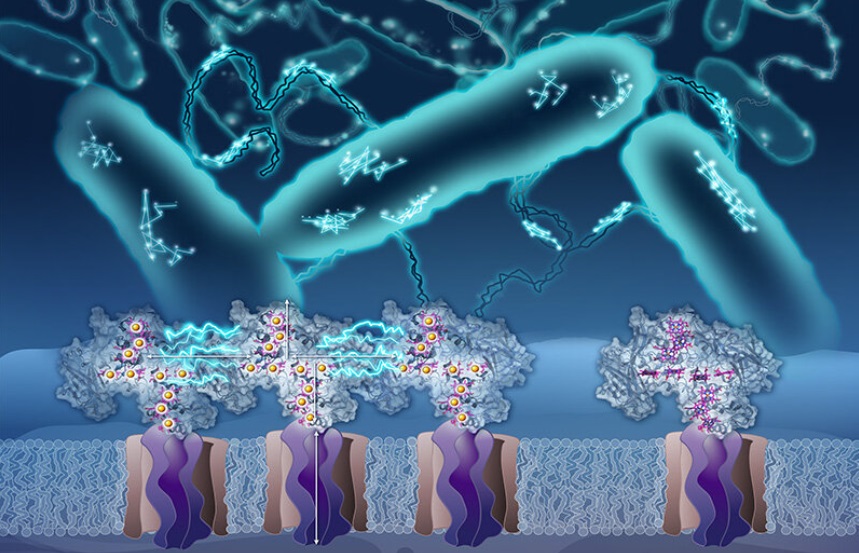The molecular dance that allows a unique bacterium to transfer electrons is captured on camera for the first time.
Imagine you wanted to plug a device into an outlet on your wall, but you didn’t have a cord that reached all the way. Instead, all you had were short snippets of wire that, put together, weren’t enough to cover the distance between the device and the wall. Say you spread them out so they weren’t touching each other but traced a dotted line that spanned the whole distance. How would you overcome the gaps between the snippets to get electricity flowing?
According to scientist Moh El-Naggar, that’s a conundrum that the Shewanella oneidensis species of bacteria faces for its very existence. He and his team at the USC Dornsife College of Letters, Arts and Sciences think they’ve discovered how the bacteria have solved it.
These single-celled organisms are known as “electric bacteria” because transferring electrons from their cell interiors to the external surfaces where they live — such as rocks deep underneath the Earth’s surface — is fundamental to their survival. Similar to how humans transfer electrons to oxygen inhaled in the lungs, the bacteria must pass electrons to the outside world in order to “breathe.”
Over the past decade, El-Naggar and his interdisciplinary team have been studying how the bacteria are able to reach into their external environment and get charge to flow across long distances — at least “long” for microbes whose length is a hundred times shorter than the width of a human hair.
Their paper, published in the Proceedings of the National Academy of Sciences (PNAS), is the first to reveal the “molecular dance” that allows the bacteria to get this electronic job done without a continuous “wire” …
